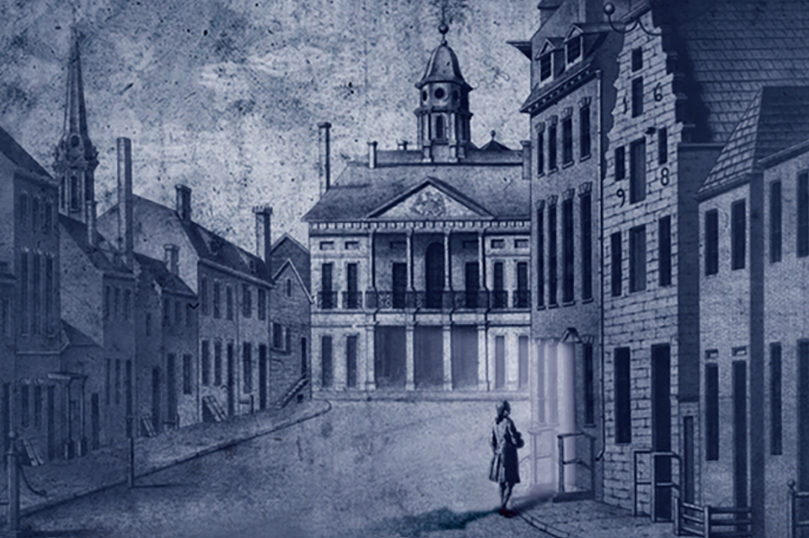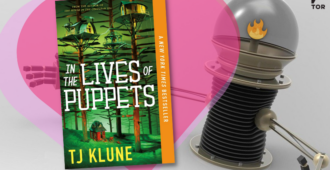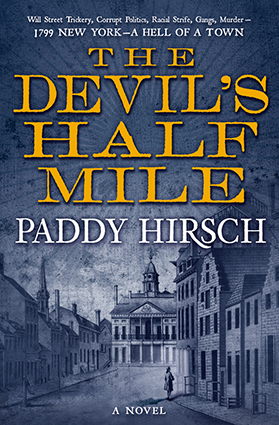 It’s 1799 – welcome to the greatest city in the world. New York at the turn of the 18th century looked just a bit different than it does today, though. Sections of Manhattan were still underwater, revolutionary legends like Alexander Hamilton still roamed the streets, and plumbing for the city’s growing population remained an unaddressed problem. Paddy Hirsch, author of The Devil’s Half Mile (May 2018), gives us just a glimpse of what life was like in the Big Apple in a time before the Statue of Liberty, the subway, fire departments, and the stock exchange.
It’s 1799 – welcome to the greatest city in the world. New York at the turn of the 18th century looked just a bit different than it does today, though. Sections of Manhattan were still underwater, revolutionary legends like Alexander Hamilton still roamed the streets, and plumbing for the city’s growing population remained an unaddressed problem. Paddy Hirsch, author of The Devil’s Half Mile (May 2018), gives us just a glimpse of what life was like in the Big Apple in a time before the Statue of Liberty, the subway, fire departments, and the stock exchange.
Written by Paddy Hirsch
- The population was exploding. 60,000 people lived in the city, and that number doubled in just 20 years, to 123,000, then doubled again to 202,000 in 1830. New York’s population hit a million just after 1870.
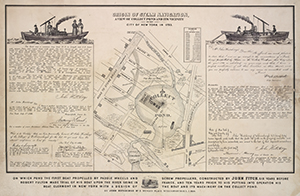
- Canal Street was a muddy tidal stream, surrounded by marshland. The area south of Canal Street and east of Broadway was a large freshwater pond, called the Collect. A few hundred yards north, where Mott and Grand Streets meet today, was a small hill named Bayard’s Mount. You can guess the rest: as New York began to expand, starting around 1802, Bayard’s Mount was leveled, and much of the hill ended up filling in the pond. The stream was dug out and extended into a canal that helped drain the water, which by this time had been horribly polluted by the abattoirs and breweries around the shores of the Collect.
- People did their grocery shopping in five markets around the city: the Fly, Catherine, Exchange and Oswego. And the Bear Market, which got its name in 1771, when a young butcher named Jacob Fincke trapped, killed and dressed a bear that had swum across the Hudson from New Jersey. People came from all over the town to see the bear’s pelt—and buy its meat—and the name stuck.
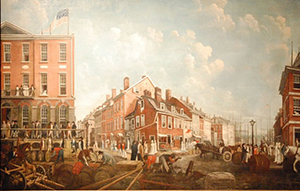
- Coffee was every bit as popular a drink as it is today. Business was conducted in coffee houses all around the city, and stalls lined the streets down by the waterfronts, slaking the thirst and staunching the hunger of market traders and stevedores. “Four cents a pint for coffee and two for a muffin” was the going rate for “the salutary beverage so much appreciated for its vivifying efficacy.”
- Most of the buildings in the city were made of wood, and fire was a constant threat. The city had a handful of fire engines “of a very inferior quality” and the onus was on citizens to take care of themselves in the event of a blaze. There were wooden stand-pumps at every street corner, and every household was required by the City Corporation to keep fire-buckets on the premises, one “for every fire-place in the house, or back kitchen; these buckets held three gallons, made of sole leather; they were hung in the passage near the front door. When the bell rang for fire, the watchmen firemen and boys, while running to the fire, sung out, ‘Throw out your buckets.’ The citizens would form lines, fill buckets and do their best to put out the fire themselves.
- Fresh water was had to come by. Most of the water pumped out of the ground was not clean enough to drink or wash clothes in, so every house had a cistern in its back yard to catch rainwater. Hawkers went door to door selling casks of ‘tea-water’, for brewing tea and coffee and mixing with liquor. But the year before, the Manhattan Company had connected a steam-powered pump to extract water from the Collect pond, and had made a start on the construction of a system of wooden water pipes to carry fresh water around the city.
Order Your Copy
Follow Paddy Hirsch online on Twitter and his website, as well as his writing at Marketplace.

